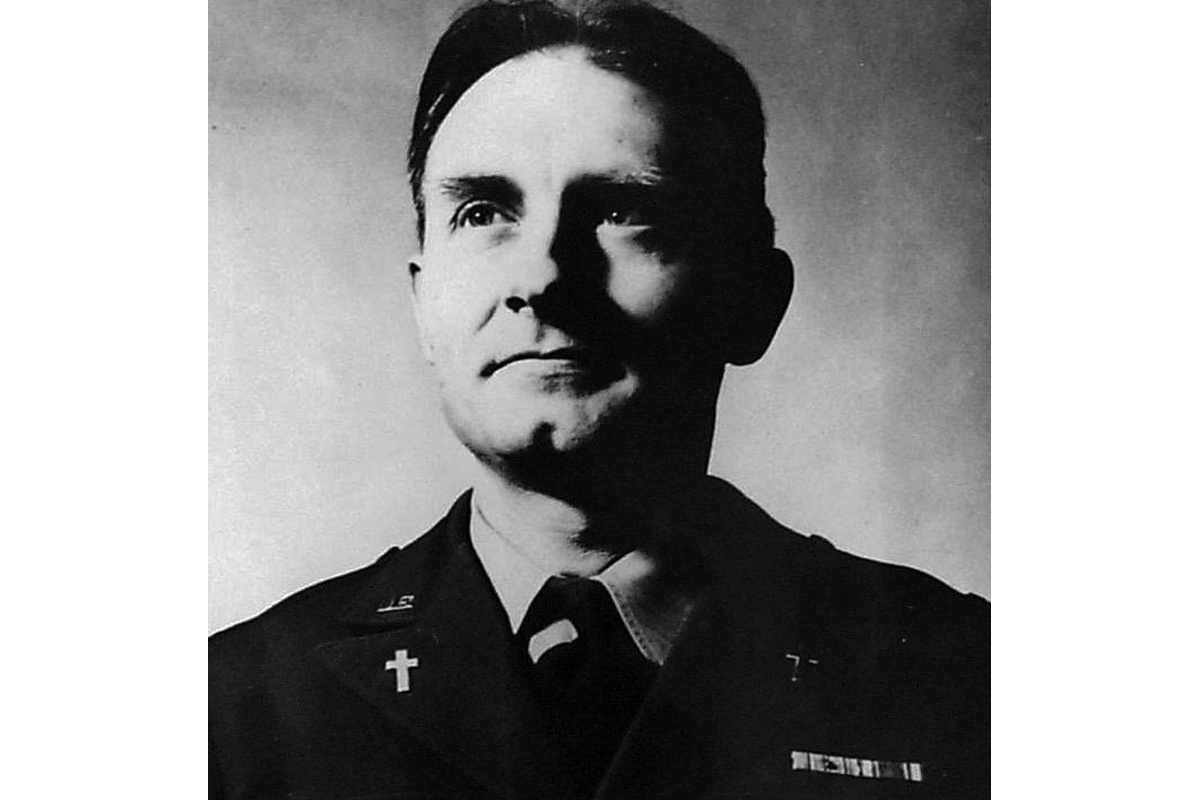
It’s been nearly 70 years since he was killed in a Korean War prison camp and only a month since the announcement that his remains were identified. Now, Father Emil Kapaun’s remains will be laid to rest in a place chosen by his family.
Kapaun will be temporarily laid to rest this fall in a crypt inside the Cathedral of the Immaculate Conception at the corner of Central and Broadway in Wichita, according to nephew Ray Kapaun, who made the announcement on Saturday.
“We felt that this would not only provide a secure place, but also provide a safe and suitable place for all to come to visit and venerate his remains,” Ray Kapaun wrote on Facebook.
In a phone interview, Ray Kapaun said the Diocese of Wichita is going to build a place to keep his uncle’s remains in the cathedral. He said other soldiers who were captive with his uncle asked for Emil Kapaun to be buried in the Arlington National Cemetery in Washington, D.C.
“He’s a Kansas boy and we felt he (should) stay here,” Ray Kapaun said. “We are definitely going to have a funeral mass for him.”
Where his uncle’s remains permanently end up depend on the outcome of the ongoing process toward sainthood, a process that Ray Kapuan said was put on hold because of the pandemic.
Emil Kapaun’s remains are expected to draw a crowd.
People go to visit Pilsen (Kansas) since it was the home of Kapaun, according to Rev. John Hotze.
Outside of Kapaun’s native St. John Nepomucene Catholic Church in Pilsen is a statue of Kapaun lending a hand to a wounded soldier as they made the long trek to captivity after being captured by the Chinese.
“We have to anticipate and we have to plan that that will be even more so now that we have his remains,” Hotze previously told The Eagle.
Kapaun was captured by Chinese forces in November 1950 while serving as a chaplain in the U.S. Army.
While in captivity, Kapaun continued to care for his fellow soldiers while resisting his captors, including conducting a sunrise service on Easter morning, 1951. He died alone in a prison camp hospital about two months later. He was 35.
In March, Sen. Jerry Moran (R-Kansas) announced that Kapaun’s remains had been identified.
Kapaun was among 848 unidentified soldiers returned to the U.S. as part of Operation Glory, an exchange of war dead, in 1954 — a year after the truce ending the Korean War was signed.
Kapaun’s body was disinterred from the National Memorial Cemetery of the Pacific in 2019 as part of a plan to exhume and identify all remaining unknown Korean War veterans resting in the national cemetery in Hawaii.
The painstaking process to identify remains, in a laboratory at Hickam Air Force Base, included using X-rays, and appealing to dental records and DNA records. There’s no question that the remains tested are Kapaun’s, an official previously told The Eagle.
“We, like I am sure most of everyone else, believe that finding him intact is itself a miracle,” Ray Kapaun wrote.
The cathedral where he will be placed is part of the Diocese of Wichita, which has noted evidence of possible miracles attributed to Kapaun in its push for him to be canonized a saint.
Kapaun, whom Kapaun Mt. Carmel Catholic High School in Wichita, is named for was also posthumously awarded the Presidential Medal of Honor in 2013.
This article is written by Michael Stavola from The Wichita Eagle and was legally licensed via the Tribune Content Agency through the Industry Dive publisher network. Please direct all licensing questions to [email protected].
© Copyright 2021 The Wichita Eagle. All rights reserved. This material may not be published, broadcast, rewritten or redistributed.
